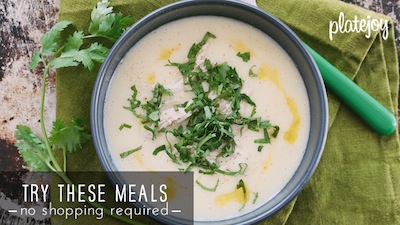Pack your knives and hop into your time machine, because we are heading back to 2008. It’s time for another installment of the Biting Mr. Bittman, series and today we take a recipe from Mark’s Diner’s Journal column, in which he remixes an Indian classic – Creamy Chicken Curry.
Before I launch into the recipe for this dish, I will take a second to add a small disclaimer: I’ve only eaten real chicken curry once before in my life, and that was almost eight years ago after a few bottles of beer (I was in Europe, so it was legal). So, I cannot say, with any confidence, that I know what a traditional curry should taste like. But with help from some native cooks with native noses, I was informed of the spices which are pertinent and should be prominent in the dish. With that knowledge, I marched onward to create a low sodium version of the classic, anxious in my understanding of good curry, but confident in my aptitude for good food.
And as an additional side-note (I promise we will get to the food at some point), Mark’s version of curry is a far cry from the labored recipes of true Indian chefs. His dish aims to be quick and satisfying, and if that means taking a few shortcuts–like purchasing blended curry powder rather than mixing his own–then so be it. I admire Mark’s gusto for making a recipe his own and for unapologetically making changes as he sees fit. And I will attempt to do the same.
As Mark’s recipe is somewhat simple, I had to do very little to make it low sodium. The real big changes lie in choosing a low sodium spice blend and low sodium yogurt. While Mark’s curry mix most assuredly had salt in it, I used a flavoring called Maharaja Spice from Penzey’s that was sodium free. But in order to boost flavor, I also choose to sauté a few extra spices–like mustard seed, cardamom pods, black and red peppercorns, fresh garlic cloves, fresh ginger, and a cinnamon stick–in the heated oil at the very beginning of the cooking process. By cooking these spices in their whole state, I was able to make the expected aromas stand out and use the pre-mixed curry powder like a subtle backdrop in the dish, rather than an overwhelming cloak.
The only other low sodium swap I had to make was to use low sodium coconut-based yogurt (10mg of sodium per serving) in place of a milk-based product (approximately 100mg of sodium per serving). The coconut yogurt adds a nice sweet taste to the curry. But do be careful to not use too much as you do not want the coconut taste to overwhelm the more mild flavors.
Now, as for my personal flare: I like using a little tomato in my curries–I may not know what they are supposed to taste like, but I make them a lot–so I chopped up a handful of heirloom goodies and I added them to the pot. When tomatoes stew, and release their juices, I think it makes a really subtle broth. And if you really want to get fancy, or maybe daring, use chicken on the bone. I took a cleaver to my legs, thighs, and breasts and actually chopped them in half, carefully removing any bone shards. By cooking the chicken on the bone, you will increase the richness of your curry broth as the marrow and other natural seasonings mix with your ingredients.
Other than that, this is a home-cook-friendly recipe for a classic Eastern comfort food. Steam up some rice for the bottom of your soup bowl, and you have a low sodium meal that will transport you all the way to Mumbai. Or just back to 2008. Chow on.
Ingredients:
- 2 tablespoons canola, corn or other neutral-flavored oil
- 1 medium onion, peeled and sliced
- 5 garlic cloves, diced
- 2 tablespoons of fresh ginger, diced
- 1/8 teaspoon of yellow mustard seed
- 1/4 teaspoon black and red peppercorn mix
- 4 cardamom pods
- 1 cinnamon stick
- 3 large tomatoes, diced
- 1 tablespoon of no salt added curry powder, or to taste
- 1 pound boneless, skinless chicken thighs, cut into chunks–or legs, thighs, and breast on the bone, cut in half
- 1 cup of water
- 1 cup plain, So Delicious coconut yogurt
- Minced cilantro or parsley leaves for garnish
Directions:
Mark advises: Begin cooking white rice, the natural accompaniment, before cutting the onion.
1. Place oil in a large skillet and turn heat to medium high.
2. A minute later, add onion, garlic, and ginger. Cook and stir until onions are translucent, about five minutes.
3. Reduce heat to medium and add the cardamom pods, mustard seeds, peppercorns, and cinnamon stick. Cook for five more minutes.
4. Add the tomatoes and cook for five more minutes.
5. Push all ingredients in the pot to the side–so you create a circle in the middle– and add the chicken pieces and curry powder.
6. Sear chicken, five minutes per side, and then add water. Bring broth to a boil and cover and cook (reduce flame to medium heat) for another 20 minutes.
7. Right before serving, turn heat to low and wait a few minutes for broth to cool. Then add in your yogurt, constantly stirring over low heat.
8. Scoop 1/4 cup of rice into each bowl and ladle chicken curry over each mound. Garnish, serve, and savor. Enjoy.







